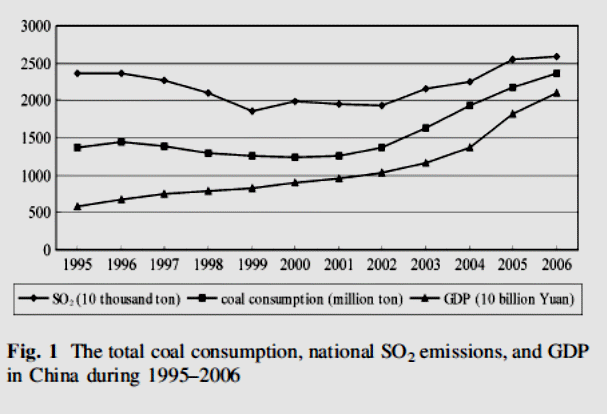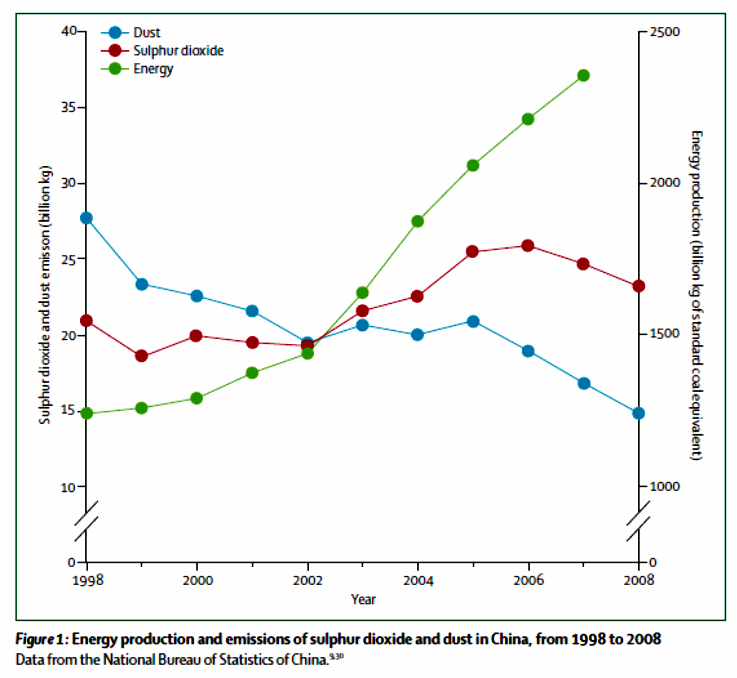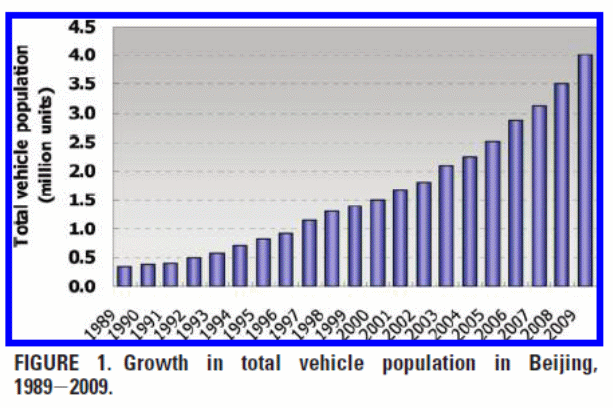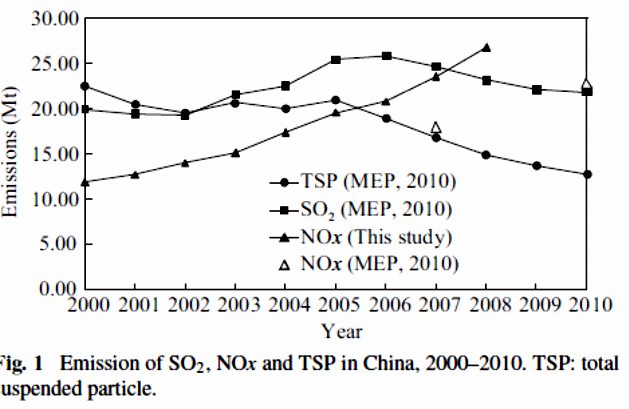Introduction
Dangerously high pollution levels shrouded Beijing in smog for several days in Jan, 2013. Poor visibility and 755 air pollution levels as measured by the US Embassy in Beijing shocked all Chinese residents.
Similar data by the American embassy also showed the PM 2.5 had reached an all-time high of 866 microgram per cubic meter, a figure 25 times that of the standard level in US . Local authorities reacted to this even in the following way, they issued containment orders such as requiring reduced construction and engineering activities, restriction on travels by civil officers and reduced outdoor school activities.
Beijing, the mega city capital of China with an estimated population of 20 million has a long history of pollution problems. Sadly to say, but persistent environmental pollution has been brought about by the massive economic growth of the country and which is yet to be sufficiently addressed by successive communist regimes.
Over-reliance on coal for energy, high motorization and poor enforcement of anti-pollution laws have been cited in many areas as the prime causes of pollution .
Air pollution involves having dangerous inhalable quantities of particles of soot, organic compounds, heavy metals, acid aerosols and dust . In Beijing, just like in many other megacities in China, coal, auto exhaust and construction are the major agents of air pollution.
Importantly to note that natural feature mainly geographical and weather pattern and not just emissions also play key roles in the pollution and pollutants levels of the city . High pollution is associated with adverse effects on human health, environment, animal and economic development.
In China, a pollution level is determined from a number of standards specified in the National Ambient Air Pollutant Standards. The particulate matter (PM) is measured on various scales. PM10 and PM2.5 are used but not TSP which was discontinued in 2001 . Heavy pollution in populous areas of Beijing and near by regions such as Beijing- Tianjin-Hebei region has been attributed to high PM2.5 and ozone concentrations.
PM2.5 has been widely used in Beijing during the last decade . To underscore the seriousness of pollution in Beijing, it should be stated that in all measurements in Beijing, the level of PM2.5 has remained exceedingly high compared to the WHO standards . This paper discusses the key aspects of air pollution in Beijing with extrapolation of the same to the rest of China cities.
Beijing is highly pollution and examining the roots, effects and control measures will present a wider picture of the state of air pollution in China. The content is by no means exhaustive and further reference may be helpful. Various factors account for high level of air pollution in the Chinese capital.
These are discussed in the following section. This is followed by the effects and later control measures before conclusion is drawn at the end.
Reasons for high pollution in Beijing
The causes of pollution in Beijing are not far from those of the greater China. They range from heavy industry by products, high population to poor environmental and enforcement policies.Pollution in Beijing was extremely high in the 1990s . However, since 1998, Beijing authorities continuously publish weekly air quality reports for concentration of TSP, SO2, NOx and carbon monoxide (CO) .
Heavy industry
Massive industrialization over the years has been a key marker of the impressive economic growth China has experienced the past decades. Throughout the last two decades heavy and high tech industries have replaced traditional “cleaner” financial and service one . These include steel, petrol, automobile, as well and chemical producers.
The top pollutant producing industries in descending order of ranking are electricity, cement, transportation and warehousing .These industries release dangerous particulate matter, gases, volatile compounds and aerosols into the air. Industries insatiable need for energy has overstretched the available sources. To date, coal remains the primary source of energy for majority of industries in Beijing.
In fact, coal account for 70% of all energy needs in China. In 2010 Beijing alone spent 27 metric tones of coal . Burning of coal and release of its untreated byproducts adds a lot of CO2, SO2 and soot in the air. SO2 emission has been on the increase in Beijing and other cities in China .Chemically, the combustion of coal accounts for 90% of SO2 air emissions, and over 70% of dust, nitrogen and CO2 .
Comparison of coal use, SO2 emission and GDP in China

Between 1997 and 2005 alone the increase was 12%. Industrialization in Beijing can be understood from its contribution to the national GDP. Together, with the cities of Shanghai and those in the Pearl River Delta region such as Guangzhou, Shenzhen and Hong Kong, it accounts for about 20% of the GDP.
Although heavy industrialization is the major source of pollution in Beijing and most China, its development has been necessitated by the high population that calls for constant jobs and improvement of livelihood. The following section examines the role of high population in regards to pollution.

Huge population
Today, China is the most densely populated country in the world. At the start of this decade, its population stood at over 1.2 billion persons. This presents a serious challenge in tackling various forms of pollution. However, even though the country shows a 60% urbanization 60%, the biggest part of the population still lives in rural areas.
Notwithstanding, this implies constant pressure on the government to create jobs and provide utility services. Meeting these demands obviously comes at a cost. It is known fact that the astronomical growth in GDP in China has been instrumental in lifting millions of Chinese out of poverty.Fast growing cities continue to attract huge number of people from rural areas in search of jobs.
The urban population grew by about 20% between 1980 and 2005 . In Beijing alone, the population currently stands at over 20 million from 15.4 million in 2005 .Overall, the population of Beijing has witnessed an annual rise of about 2% since 1990s . High population translates into more use of solid fuels and coal . Furthermore, despite great economic progress, biomass fuel and coal is still heavily relied on in rural areas.
High population has contributed to air pollution in many ways. First, high ever-swelling urban population calls for more housing leading to intensive construction thus compounding air problems. Secondly, massive urban expansion leads to differences in surface temperatures between the main city center and far flung suburban and decrease in relative humidity.
This sets perfect condition of accumulation of particulate matter and development of smog in the area. The tall buildings also interfere with moving of air thus clogging the atmosphere pollutants.
Lastly, High urban population also led to increased demand and usage of auto transport leading to increased vehicular emissions . Between 1999 and 2005, the number of vehicles in Beijing increased from 1.39 million to 2.65 million . The next section details the impact of high number of cars on air pollution in Beijing.
Number of cars
Motorization in Beijing has grown relatively fast in similar pattern to swelling city population and growth in economy . Continuous growth of number of vehicles and resultant emission are an impediment to efforts in improving urban air quality .

Beijing has experienced a steady increase of about 13% in number of vehicles to reach over 5 million today. The bulk of this is personal vehicles and efforts are underway to lessen it through establishment of various public mass transportation systems.
This astonishing increase has brought with it challenges in tackling air pollution in the city. In this regard, various investigators has identified motor emissions are key facilitators of air pollution in the area. Emissions from vehicles has been cited as sources of high CO, NOx, Volatile organic compounds and ozone in central and downtown in Beijing.
Less planting of trees
Availability of land is a key catalyst of economic industrialization many forested regions have been cleared to set up factories. This has reduced the forest cover of Beijing to just below 1 %. The end result of this is increased suspension of particulate matter in the air and poor sequestration of carbon compounds and other emission from the atmosphere.
Inefficient pollution control
Despite apparent political will to tackle air pollution, control measures set out are yet to reduce air pollution levels to even just below international standards. The State Environmental Protection Administration (SEPA) and its successor Ministry of Environmental Protection (MEP)goals of time-based cuts in major emissions has not produced little improvement.
A notable effort is the 10 stages emergency control measures launched by the Beijing government in 1998. The gains of this initiative have been erratic, partly affected by ballooning vehicle number and the city population.
Further evidence of challenges in addressing environmental degradation is from the fact that Beijing has twiced postponed the nationwide rollout of vehicle-emissions standards despite the lagging of fuel-quality standards. In addition, emission rates remain relatively high above world standards.
A good example is NOx emissions. NOx emissions have actually increased within the last decade despite effort to lower it. Wang & Hao (2012) attribute this to slow and/or halted control legislations. MEP has estimated the NOx is over 22mt, a level far above that of United States and Europe.
The installations of low NOx burners (LNB), as required by law seem not to have produced any reductions. According to a report by the Washington-based Center for strategic and InternationalStudies (CSIS) (2008), a major impediment to pollution control implementation in Beijing has been the lack of connection between the central and local authorities.
Beijing efforts to cut dangerous emission is thwarted by local authorities who disregard pollution legislation in favor of emissions control.

In Beijing, NOx has been associated with the 20% rise of nitrate aerosol in PM2.5 and ozone between 2000 and 2008.
PM emissions standards have produced mixed effect pointing to the fact that success in cutting dangerous emitted require concerted effort. For example, while PM emission standard requiring adoption of technologies such as installation of electrostatic precipitators (ESP) and fabric filters have produced reduction in some industries ,this has been cancelled out by high PM from traditional steel, cement and aluminum industries.
The level of PM10 in Beijing has oscillated between 114-127 g/m3 between 2005 and 2010, way above the 40 g/m3 of European Union’s air quality standard.
High pollution in Beijing and greater China has produced the common effects recorded elsewhere touching on human health, environment, animals generally the growth of affected cities. The next section details each of these points
Effects of high pollution
Health effects
Massive industrialization in China has produced proportionate decline in environmental quality in most cities. Beijing is no exception. Highly polluted outdoor air is associated with 300,000 deaths, 20million cases of respiratory infection and an annual health budget of over 500 billion Yuan representing roughly 3% of the gross GDP.
Data by WHO also indicates that approximately 450,000 premature deaths are due to the used of solid fuels in homes. Most of the health problems have been traced to coal combustion. Some of the health effects of air pollution include reduced fetal and child growth, pulmonary diseases (e.g. asthma), development abnormalities, and risk of cancer.
Studies have shown that the most affected are fetuses,infants and young children due to greater absorption and slower toxic elimination by their bodies. Studies have also shown the yearly mean density of respirable particles in Beijing and other megacities such as Shanghai to be around/over 100µg/m3 , a concentration nearly four times of comparable cities such as New York and Tokyo.
This may explain the high number of respiratory problems common in Beijing, where face masks are easy to spot.The European Space Agency (ESA) considers Beijing to be one of the Chinese cities with the worst levels of NOx that seriously damages the lungs. It is difficult to estimate the actual mortality and other health problems due to air pollution in China because the local government does not reveal real data to the public .
Poor air quality is scarring would-be inhabitants and contributing to abandonment of the city by expatriates. John Pomfret, aWashington Post writer when asked why he moved back to Los Angeles Jokingly said “for the air”. Although there are no statistical figures of the impact of this migration, it illustrates the dire nature of air pollution in Beijing and other Chinese megacities
Environmental effects
The environment has been a major casualty of severe air pollution in China. Statistics from the MEP for 2010 indicate that 50.4% of monitored Chinese cities suffered from acid rain during that year alone. According to the same report areas with heavy pollution and low PH (<.4.5)precipitation increased for the 1995-2010 period. Acidic rainfall can bring about skin infection, corrosion of building and impairment of plants growth.
A noted trend in recent years is that Beijing and other northern cities such as Tumen, Chengde, and Shangluo have recorded PH of below 5.6. In general, acid rain problems has escalated in the last two decades with 30% of Chinese territories experiencing acid rain pollution since the 1990s.
China has overtaken the United States as the largest emitter of greenhouse gases (Wang & Hao,2012; Ma, 2013).Since 2006, China has led the world in CO2 emissions and together with the USA account for about 40% of global emissions . This has resulted in increased external pressure for China to assume greater role in curbing global warming.
For example, heavy use of coal and other fossil fuels that during the process of burning release greenhouse gases is the main source of the global climate changes. Recent extremely severe winters attest to these claims. Apart from CO2, China also releases huge amounts of methane, an important greenhouse gas whose source is rice paddies, landfills, coal mines, and a number of natural sources.
Marine and ecological effects
Particulate matter gets soaked with precipitation and finds way into water bodies. Heavy metals particles may also enter animal ecosystem through general sedimentation. These occurrences alter the ecological balance of marine habitat by affecting the PH, light penetration, aeration and density of water.
Death of marine animals arises when their breathing systems get clogged by particulate matter and from poisoning. From the water bodies the pollutants may find their way into the food chain through human consumption of fish and other marine animals. A large shoal of floating dead fish has become a common sight in water bodies around Beijing.
Country/city economic development
Mitigating the problems and causes by air pollution is an extremely expensive undertaking. Billions that would otherwise been channeled to grow the economy are spent on health costs, technologies to cut harmful emissions and related areas.. In spite of scarce empirical data, the benefit of lessening respiratory illness in children was estimated at 3.5 billion dollars over the period 2002-2011.
No example illustrates this better than the 2008 Beijing Olympics. Organizing committee has to spend billion to improve the quality of air and increase the number of “blue sky” days.
High air pollution in Beijing has also drawn sharp criticism from outside and pressure to adopt tough measures which may interfere with local economies. Today China is still under pressure to sign Kyoto Protocol to cut greenhouse emissions and meet targets set for top carbon emitters.
Suggested pollution control measures
Reducing air pollution is critical to the welfare and progression of Beijing. Although authorities have made commendable strides in cutting harmful emission, a lot still remains undone. Curtailing and reducing major emissions will require concerted efforts at individual, governmental and organization level.
Individuals residing in the city should be encouraged to plant more trees, use more public transport, and develop a deep sense of environmental consciousness. This is necessary as by 2010, the total number of vehicle in Beijing stood at 4.87million.
Encouraging the use of public transport can lower emission of CO, hydrocarbons, NOx and particulate matter from motor vehicles. Additionally, Investigators have also identified automobiles among the top agents of air pollution in Beijing. Therefore, future air pollution intervention measures need to consider expansion and revamping of public transportation system as a key mitigating factor.
As China become more industrialized farming and related activities such as planting trees continue to loose attention. This needs to be reversed. Authorities should encourage planting as green plants sequester excess carbon from the environment. In addition some plant can act as reservoir for heavy metals, decreasing their concentration in the atmosphere.
Authorities also need to encourage and instill and instill a deep sense of environmental consciousness among residents. Such measures have been shown to be beneficial in western countries that once faced similar pollution problems.
The central government is continually rolling out ‘cleaning’ technologies and regulations geared towards reducing air pollution in Beijing and the rest of China. This has included flue gas desulfurization (FGD) system that all coal-fired plants are required to use . The adoption is encouraging given that by 2010 over 81% of such plants had already installed FGD.
Coal washing compliance has also increased by an impressive 15% between 2005 and 2010 . A tremendous control of PM has been achieved in Beijing through policy and standards implementation. The 2003 PM emission standard (GB 13223-2003) requires PM concentration in flue gas to be less than 50mg/m3.
Installation of electrostatic precipitators and fabric filters in coal units with generation capacity of over 600W resulted in decrease of PM2.5 of between 7%- 69% from 1990 to 2005 in different sectors. However, this gain from technological measures was reversed in the later part of the decade due to an explosive growth of high PM emitting industries such as steel, cement and aluminum.
In Beijing, the PM10 remains relatively high fluctuating around 114-125 g/cm3 from 2005 to 2010 . While these traditional approaches are indispensable, the actual solution may lie in promoting energy efficiency and renewable energy sources.
This intervention approach is to ensure that fewer pollutants are produced from sources. In all respects, Beijing needs to considerably reduce its overreliance on coal, the primary source of air pollution and the main driver of its industries.
Past experience has shown that localized actions and policies do not produce lasting reduction in emission primarily due to infiltrations from outside. Therefore, future efforts to cut high emission in Beijing need to take this into account.
A comprehensive approach would seek to address various pollution problems including acid precipitation, ozone, particulates, and greenhouses gases. To this end, regional air pollution modeling and networks should be encouraged. This will help craft better forecasts, regulation and emergency systems
Anti-pollution organizational practices
Beijing could borrow from foreign standards regulating vehicle emissions. Being the capital city, Beijing has to implement the phase emission standard to those in Europe. Encouragingly, Beijing enforced phase 4 emission standards in 2008 and 2009.
This control measures are vital in decreasing the overall fleet average emission factors in the city. Indeed, studies have shown that the implementation of phase 1-4 emission standards since 1995 has resulted in annual decrease of fleet –average emission factors of CO,HC, NOx and PM10 in light duty cars by 12.5%, 10.0%, 5.8% and 13.0% respectively.
Conclusion
Air pollution is a serious problem in Beijing. Massive industrialization has brought with it catastrophic levels of pollution to the city. The dire situation of air quality has earned Beijing the embarrassing label of the pollution capital of the planet. The single most important source of pollution is coal. Combustion of coal leads to increase in various carbon compounds in the air and is the precursor to many greenhouse gases.
The primary driving factors of pollution in these like are no different from those elsewhere. They include presence of heavy industries, huge population, high number of personal car and general inefficiency in pollution control by government and local authority bodies.
High rate of pollution has caused a number of problems in the city including, high incidence of respiratory diseases and contributed to immigration abroad by foreigners and locals. On the other hand, the problems has negatively impacted the environment through acid precipitation, interfering with plant growth and increasing levels of greenhouse gases that have been associated with the global warming phenomenon.
Animal sanctuaries have also been unpurified leading to imbalances in their ecosystem and frequent deaths. The effects of severe air degradation havebeen felt on the economic development of the city. This is because huge invested have to be made to mitigate the harmful effects brought about by the emissions.
Whereas efforts in past two decades to contain air pollution in Beijing have produced commendable results in mitigating their negative effects, a lot of challenges still remain. With industrialization yet to peak in the city, current mitigation measures are poised to get diluted by upcoming industries, especially those traditionally associated with high particulate matter content.
However, current measures should continue to emphasize more vegetation planting, greater use of public transport system, and enhancement of environmental consciousness.
The city also needs to adopt more cleaner and renewable sources of energy such as solar and significantly cut it’s over reliance of coal as the primary source of energy. It is equally important for the government and local authorities to work in tandem in implementing emission regulations and policies. Otherwise, reduction in air emissions will not be realized anytime soon.
References
Associated Press. (2013). Air pollution in Beijing reaches hazardous levels. Web.
Chan, C. K., & Yao, X. (2008). Air pollution in mega cities in China. Atmosph Env, 42, 1-42.
CSIS. (2008). Assessing the Chinese government response to the challenge of enviroment and health. Washingto D.C: CSIS Freeman Chair in China Studies.
Gao, C., Yin, H., Ai, N., & Huang, Z. (2009). Historical analysis of SO2 pollution control policies in China. Env Mngt, 43, 447-457. Web.
Hays, J. (2012). Air pollution in China. Facts and Details. Web.
Ho, M. S., & Jorgenson, D. W. (2008). Greening china: Market-based policies for air-pollution control. Harvard Magazine, pp. 32-38.
Ma, W. (2013). Beijing pollution hits highs. Dow Jones & Company, Inc. Web.
Millman, A., Tang, D., & Perera, F. P. (2008). Air pollution threatens the health of children in China. Pediatrics, 122, 620. Web.
Wang, S., & Hao, J. (2012). Air quality management in China:Issues, challenges ,and options. J of Env Sc, 24(1), 2-13. Web.
Wu, Q. Z., Wang, Z. F., Gbaguidi, A., Gao, C., Li, L. N., & Wang, W. (2011). Numerical study of contributions to air pollution in Beijing during CARE Beijing-2006. Atmph Chem & Phy, 11, 5997-6011. Web.
Wu, Y., Jiewang, R., Zhou, Y., Honglin, B., Xinfu, L., Ebinhe, K., et al. (2009). On-Road vehicle emission control in Beijing: Past ,present and future. Environ. Sci., 12, 322-345.
Zhang, J., & Smith, K. R. (2007). Household air pollution from coal and biomass fuels in China: Measurements, health impacts, and interventions. Environ Health Perspect, 115, 848-855. Web.
Zhang, J., Mauzerall, D. L., Zhu, T., Liang, S., Ezzati, M., Remais, J. V., et al. (2010). Enviromental health in China: progress towards clean air and safe water. Lancet, 375, 1110-19.